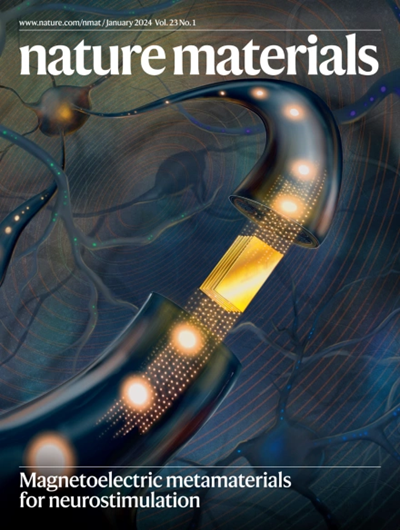Grain boundary zirconia-modified garnet solid-state electrolyte.
IF 38.5
1区 材料科学
Q1 CHEMISTRY, PHYSICAL
引用次数: 0
Abstract
We report a method for promoting electrochemical stability in garnet Li6.4La3Zr1.4Ta0.6O12 solid-state electrolyte based on a composite two-phase oxide-oxide microstructure. Grain boundary precipitation of the controlled distribution of amorphous zirconium oxide microparticles is achieved through the addition of reactive tantalum carbide. During ambient-atmosphere sintering, the carbide decomposes through an in situ reaction, the 'extra' Ta substituting for Zr within the Li6.4La3Zr1.4Ta0.6O12 lattice. Density functional theory (DFT) calculations identify a thermodynamically favourable reaction path and show how substituting Ta5+ at Zr4+ sites affects the crystal structure as well as bulk ionic and electronic conductivities. Quantitative stereology highlights that zirconia also acts as a sintering aid, reducing compact porosity. Cryogenic focused-ion-beam scanning electron microscopy and fractography analysis of cycled solid-state electrolytes illustrates that near-universally observed intergranular Li-metal dendrite propagation is suppressed by the two-phase microstructure, favouring transgranular dendrites instead. Importantly, DFT demonstrates that compared with the Li6.4La3Zr1.4Ta0.6O12 surface, the zirconium oxide surface per se is less electronically conductive and does not trap excess electrons to reduce Li ions. This is a key reason for the substantial improvement in the electrochemical properties over the single-phase baseline.晶界氧化锆修饰石榴石固态电解质。
本文报道了一种基于复合两相氧化物-氧化物微观结构提高石榴石Li6.4La3Zr1.4Ta0.6O12固态电解质电化学稳定性的方法。通过添加活性碳化钽,实现了非晶氧化锆微粒的晶界析出。在气氛烧结过程中,碳化物通过原位反应分解,“额外的”Ta取代了Li6.4La3Zr1.4Ta0.6O12晶格中的Zr。密度泛函理论(DFT)计算确定了热力学上有利的反应路径,并显示了在Zr4+位置取代Ta5+如何影响晶体结构以及体积离子和电子电导率。定量立体学强调,氧化锆也作为烧结助剂,减少致密孔隙率。低温聚焦离子束扫描电子显微镜和循环固态电解质的断口分析表明,几乎普遍观察到的两相微观结构抑制了锂金属晶间枝晶的扩展,反而有利于穿晶枝晶的扩展。重要的是,DFT表明,与Li6.4La3Zr1.4Ta0.6O12表面相比,氧化锆表面本身具有更低的导电性,并且不会捕获多余的电子来还原Li离子。这是电化学性能比单相基线有实质性改善的关键原因。
本文章由计算机程序翻译,如有差异,请以英文原文为准。
求助全文
约1分钟内获得全文
求助全文
来源期刊

Nature Materials
工程技术-材料科学:综合
CiteScore
62.20
自引率
0.70%
发文量
221
审稿时长
3.2 months
期刊介绍:
Nature Materials is a monthly multi-disciplinary journal aimed at bringing together cutting-edge research across the entire spectrum of materials science and engineering. It covers all applied and fundamental aspects of the synthesis/processing, structure/composition, properties, and performance of materials. The journal recognizes that materials research has an increasing impact on classical disciplines such as physics, chemistry, and biology.
Additionally, Nature Materials provides a forum for the development of a common identity among materials scientists and encourages interdisciplinary collaboration. It takes an integrated and balanced approach to all areas of materials research, fostering the exchange of ideas between scientists involved in different disciplines.
Nature Materials is an invaluable resource for scientists in academia and industry who are active in discovering and developing materials and materials-related concepts. It offers engaging and informative papers of exceptional significance and quality, with the aim of influencing the development of society in the future.
 求助内容:
求助内容: 应助结果提醒方式:
应助结果提醒方式:


